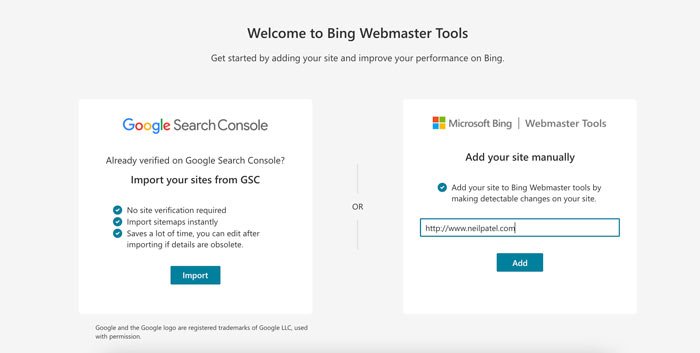
Google can understand the structure of your website and make it more authoritative by creating a topic cluster. Many brands are experts in more than one field, so it is worth developing your website around key areas. Your site might be designed to target both an industry-relevant keyword (highly valuable) and a subtopic. If your site sells HR software, you might target the keyword "recruiting" along with a general industry keyword.
Linking subtopics to pillar pages
This is a great way to improve content marketing efforts. Once you have determined your core topic, create a subtopic around it and link them to the pillar webpage using the anchor texts from that core topic. This will increase the chances that your subtopics are found in search engines.
A pillar page should be created for each topic to ensure that they are search engine optimized. This page should contain a general keyword or key phrase that describes the cluster. Then link each cluster page to the pillar. The entire cluster will now have an index of subtopics. Google will not crawl these pages if your pillar page looks like a blog article.

Identifying pages on pillars that aren't performing well
You need to know your customer's intent when creating a pillar page. Moz's Keyword Explorer and Google Adwords Keyword Planner can help you determine which keywords have high search volumes for your market. Check the top pages that rank high and look for keywords that relate to your topic. A table of contents can be useful to help readers jump to certain chapters within your pillar pages.
Not only should you determine which keywords your target audience is searching, but it is also important to decide how long the page will be. A pillar page should not exceed 1,000 words and link to other posts on the topic. An article with many words can be cut to a few hundred words if you have a lot of content. The content of your pillar page will determine the length, but at the very least it should contain a link back to the original blog post.
Creating topic clusters
Topic clusters are a great way to rank high for specific keywords. These topics can also be subtopiced. The subtopic pages must all link back the main pillar page. If they don’t have links, they can link to related content. Google can see the relationship between these pages by linking. Continue reading to learn how you can create topic clusters. Here are some tips. Understanding your keyword research is key to getting the most from topic clusters.
In-depth content, organized by topic, is an important way to increase search engine visibility. It can also help you gain more authority over a topic. Site authority and page ranking are both earned when a site is comprehensive. A topic cluster that is well-designed provides searchers with a single-stop shop, increasing authority and reach. Ranking content used to be easy. All you had to do to rank content was to use Google's Keyword Planner. This tool allowed you to identify popular search queries and optimize the on-page factors. However, keywords are no longer enough to improve SEO. Topic clusters are now essential.

Measuring your results
Topic clusters are a way to create content that is focused on one topic. Each piece should have its own theme. Each piece should include both a primary keyword and associated terms in order to accomplish this. Keyword difficulty is a key consideration when choosing a core keyword, so it is imperative to select a topic that has a high volume of searches. The pillar article should be ranked using a broad, high-level, or medium-level keyword. Supplemental material should be organized using low volume and long-tail keywords.
Topic clusters not only improve your pillar pages but also increase traffic for keywords with high search volumes that are highly specific. Better rankings will increase credibility among search engines and users. Bid4Papers topic grouped helped increase domain's traffic by 30%. This clustering strategy led to increased dwell times and social media interaction. For a topic to succeed, it is crucial that you focus on quality content and its structure.
FAQ
What are the best tools for on-page optimization?
The best tools for on-page SEO are video embeds, image alt tags, structured data markup, and internal link structure. You can read more about these types issues in this article.
Why SEO strategy is so important
The main goal of search engine optimization (SEO) is to increase traffic to your site by getting as many people as possible to find you when they use Google.
Search engines like Google and Yahoo! store information about websites in servers called crawlers. They send this data back from the company's central databases. This allows them to index pages for searching purposes.
If your website appears high in the results, more people will click on your link and visit your page. These searches will not show you, so you won't get found.
The most effective way to ensure your site gets noticed is to rank highly in all the major search engines. There are two main methods to achieve this: paid advertising or natural organic links.
Paid Advertising – Paid advertising is when companies pay per click to have their ads appear higher than other sites in search results. These ads could include banner ads and text ads as well as pop-ups and e-commerce widgets.
Natural Organic Links – These links are created by sites that have been built over time and gained the trust of your industry. Blogs, guest blogging, commenting and linking are all ways to build links.
You must continually invest in both types of marketing to stay ahead of your competition.
What do I need to know about backlinks?
Backlinks are links that point to a webpage on another website. Search engines use them to find a webpage in search results. They are particularly helpful as they demonstrate that someone else believes that your content has value. A lot of quality backlinks is necessary if you want your content to rank high in search engine results.
Where should my website be?
Your website needs to be found at the top results page of search results. It should be at the top search results. However, some searches may have hundreds of pages. How can you stand out against these competitors with your website?
Statistics
- Deleting those 10k pages is one of the main reasons that he improved his site's organic traffic by nearly 90%: (backlinko.com)
- Sean isn't alone… Blogger James Pearson recently axed hundreds of blog posts from his site… and his organic traffic increased by 30%: (backlinko.com)
- 93%of online experiences today begin on search engines. (marketinginsidergroup.com)
- A 62.60% organic traffic boost to that page: (backlinko.com)
- 64% of marketers actively create SEO campaigns because they help hit multiple key performance indicators (KPIs), including increasing traffic, helping your site rank for relevant keywords, improving your conversion rate, and much more. (semrush.com)
External Links
How To
How to choose the right SEO strategy for your business
These are some factors that can help you choose the right SEO strategy for your website.
-
Keyword Research
SEO's primary goal is to rank well for specific terms. You also need to identify negative keyword phrases which aren't relevant to your audience.You might also want to look for less competitive long-tail keywords.
-
Content Strategy
Content marketing is important for all businesses. Websites that sell eCommerce products or services need to be ranked high in search results pages. This will increase sales and conversion rates.
Creating relevant, engaging content that solves problems and provides solutions is key.
-
Link Building
Links are vital for ranking well on search engines.They help boost your page rankings and improve your website's credibility.However, building many links can dilute your Page Rank score. Therefore, it is essential to establish valuable relationships between other websites.
-
Social Media Marketing
You may consider using social media channels to promote the brand. By sharing your content on these platforms, you can encourage others to share it.
-
Website Structure
While good design may not always lead to higher rankings it can make a significant impact on your website's ranking. A clean, simple layout improves user experience, which leads to increased conversions. Additionally, you must ensure your site loads quickly so users don't leave before completing transactions.
-
Mobile Optimization
Mobile devices account for almost half of internet usage today.If your website isn't optimized for mobile, you could lose out on traffic and potential clients.
-
Local Search
This refers to targeting local markets instead of national ones. It optimizes your website for local searches like "restaurants near me" and "businesses within my area". It is easier for local SEO to rank well because people trust recommendations from relatives, friends, colleagues and colleagues.
-
Ecommerce Website Development
Ecommerce websites benefit from a range of different types of SEO strategies.For example, they often perform best when they're optimized for both desktop and mobile devices. They are also more likely to be ranked for long tail keywords.
-
Video Ranking
Video content ranks well in search engines. It ranks well for longer queries and gets more shares.
-
Branding
Branding is the process of designing a logo, product names, and messaging that gives your company its own identity and personality. This helps customers get to know you and what you do.
-
Analytics Software
Analytics software allows you to track how visitors interact with your website.The information gathered through analytics can help optimize your efforts and increase conversions.
-
Email List Management
Email lists allow you to send emails directly to your target audience.You can send messages about new products, special offers, and promotions.
-
Blogging
Blogging is another way to generate quality backlinks. If you blog about your business, you'll get links from reputable sources.
-
Customer Satisfaction
Customer satisfaction is one of the most effective ways to get high-quality backlinks.When satisfied customers refer their friends and colleagues to your site, this will result in quality backlinks.
-
Content Marketing
Content marketing involves producing unique, useful, relevant content that educates, entertains, or inspires readers.
Engaging content will help build trust among your target audience and improve conversion rates.